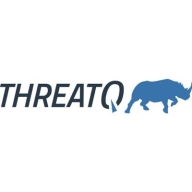

ThreatQ and ReversingLabs are both recognized solutions in threat intelligence and malware analysis. Users are generally happier with the support and pricing of ThreatQ, while ReversingLabs stands out with its robust features and overall value.
What features are offered by ThreatQ in comparison to ReversingLabs?ThreatQ offers strong threat intelligence aggregation and customization capabilities. ReversingLabs provides in-depth analysis and integration with various security tools. ReversingLabs has more comprehensive analytical features.
What areas of improvement can be found in ThreatQ in comparison to ReversingLabs?Users suggest ThreatQ could improve its reporting capabilities, integrations with other tools, and scalability. Feedback for ReversingLabs indicates a need for enhanced user documentation, better visualization tools, and more intuitive user interfaces.
How is the ease of deployment and customer service of ThreatQ in comparison to ReversingLabs?ThreatQ is noted for a straightforward deployment process and responsive customer service. ReversingLabs users report a more complex setup but commendable support for troubleshooting and maintenance.
What setup costs and ROI can be seen with ThreatQ in comparison to ReversingLabs?ThreatQ is often seen as a cost-effective solution with a good ROI, though initial setup costs might be high. ReversingLabs is more expensive but delivers a superior ROI due to its extensive features and analytical tools.
| Product | Market Share (%) |
|---|---|
| ThreatQ | 2.7% |
| ReversingLabs | 1.6% |
| Other | 95.7% |

ReversingLabs is the trusted authority in software and file security. We provide the modern cybersecurity platform to verify and deliver safe binaries. Trusted by the Fortune 500 and leading cybersecurity vendors, the ReversingLabs Titanium Platform® powers the software supply chain and file security insights, tracking over 35 billion files daily with the ability to deconstruct full software binaries in seconds to minutes. Only ReversingLabs provides that final exam to determine whether a single file or full software binary presents a risk to your organization and your customers.
RL - Trust Delivered.
ThreatQ is a cybersecurity platform designed to enhance threat intelligence operations. It centralizes and manages threat data, allowing organizations to identify and respond to threats more efficiently.
ThreatQ is designed to empower security teams by personalizing threat intelligence and automation processes. It integrates with existing technologies, streamlining data collection and distribution. This promotes efficient detection, investigation, and response to security incidents, improving overall cybersecurity posture and resilience.
What are the key features of ThreatQ?ThreatQ is versatile in industries like finance and healthcare, where cybersecurity is crucial. It facilitates swift threat identification and risk management, essential for protecting sensitive data and complying with industry regulations. Its adaptability allows it to fit into diverse security architectures, making it a valuable asset across sectors.
We monitor all Threat Intelligence Platforms reviews to prevent fraudulent reviews and keep review quality high. We do not post reviews by company employees or direct competitors. We validate each review for authenticity via cross-reference with LinkedIn, and personal follow-up with the reviewer when necessary.